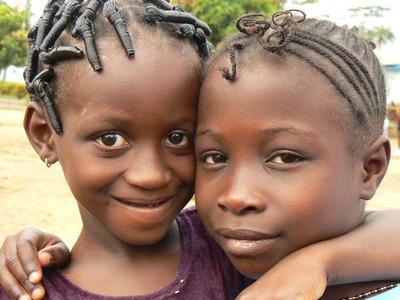Child Sponsorship background from N'Zérékoré, Guinea
 SOS Children's Village N'Zérékoré
SOS Children's Village N'Zérékoré
Although the decision to build an SOS Children's Village in N'Zérékoré was made as early as 1993, several years of delay were caused through a change in government, postponing its completion to December 2000. Ceremonial opening through Guinean President S.E. Gen. Lansana Conte's representative, the minister for fishery and fish farming took place on 23 September 2002.
The SOS Children's Village N'Zérékoré is located about five km outside the town, comprising thirteen family houses, a village director's house, a guest house, a playground, an administrative service unit, and a house for the so-called SOS Aunts (SOS Children’s Village mothers in training, who assist present SOS mothers in everyday jobs, and substitute them in case of illness or holidays).
Other SOS Projects in N'Zérékoré
An SOS Nursery with four group rooms, a kitchen, a playground and an administrative unit for a total of about 100 children and a SOS School are also located on the premises of the SOS Children's Village.
As education is scarce in the surrounding area, an SOS Primary and Secondary School was added to the SOS Children's Village. It consists of four buildings, in which six classrooms, a computer room, an administrative/service unit and a kitchen are found. At the moment, about 210 children get an education at the SOS schools.
Both, the SOS Nursery and the SOS Schools are also available to children from the local neighbourhood.
The SOS Social Centre, which was opened in September 2006, mainly focuses on supporting refugees and families, in particular poor families who cannot provide for the basic needs of their children. An approximate number of 125 beneficiaries are supported by the SOS Social Centre at the moment.
Background to N'Zérékoré
Nzérékoré is the largest city in the Guinée Forestière region of south-eastern Guinea and is capital of the Nzérékoré Prefecture. It is Guinea's third largest city (after Conakry, the capital city, and Kankan, located in Upper Guinea). It was the centre of a rising against French rule in 1911. It is now known as a market town, and for its silverworking.

 Return to Schools Wikipedia Home page…
Return to Schools Wikipedia Home page…
